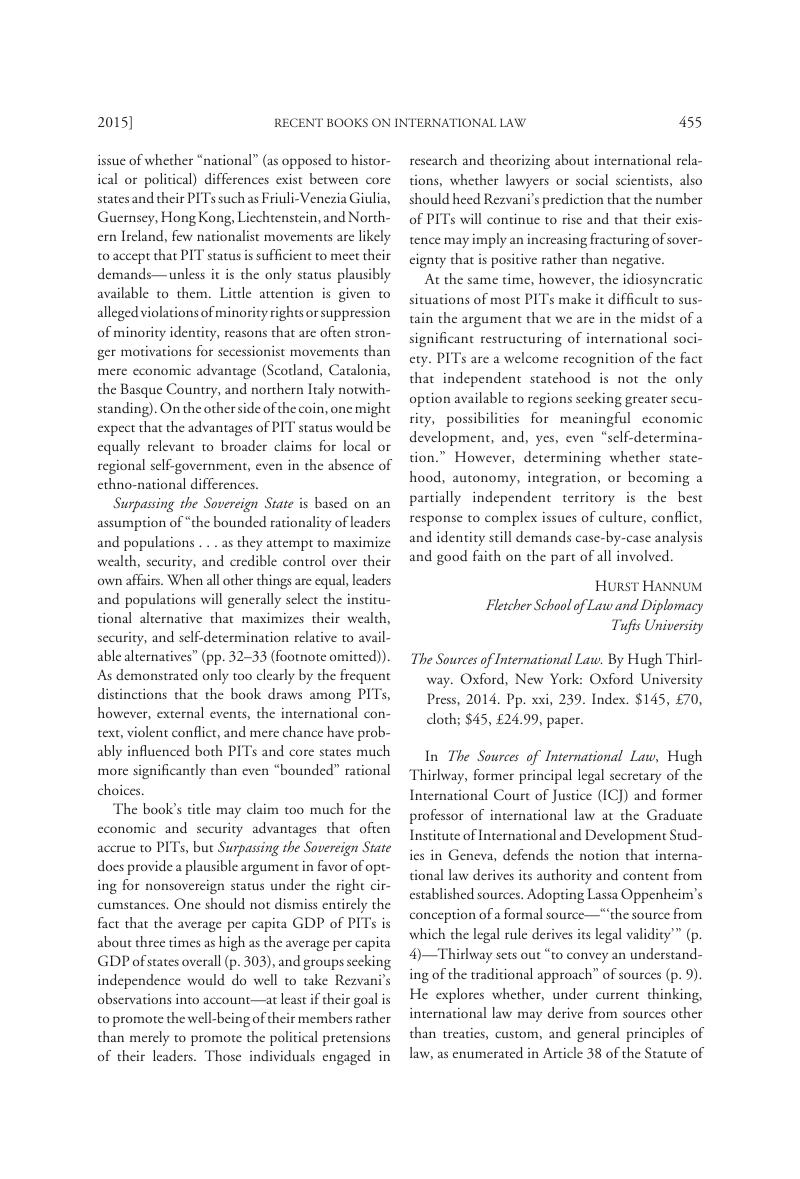No CrossRef data available.
Article contents
The Sources of International Law. By Hugh Thirlway. Oxford, New York: Oxford University Press, 2014. Pp. xxi, 239. Index. $145, £70, cloth; $45, £24.99, paper.
Review products
Published online by Cambridge University Press: 20 January 2017
Abstract

- Type
- Recent Books on International Law
- Information
- Copyright
- Copyright © American Society of International Law 2015
References
1 Article 38(1) of the ICJ Statute provides:
- 1.
1. The Court, whose function is to decide in accordance with international law such disputes as are submitted to it, shall apply:
- a.
a. international conventions, whether general or particular, establishing rules expressly recognized by the contesting states;
- b.
b. international custom, as evidence of a general practice accepted as law;
- c.
c. the general principles of law recognized by civilized nations;
- d.
d. subject to the provisions of Article 59, judicial decisions and the teachings of the most highly qualified publicists of the various nations, as subsidiary means for the determination of rules of law.
2 As discussed at pages 176–80, Thirlway has thus modified his 1972 view that “one of the most fundamental tenets of international law [is] that individuals and private corporations are not subjects of international law.” H. W. A. Thirlway, International Customary Law and Codification 7 (1972). That view is consistent with a state-centric positivist theory. However, although much of international human rights law developed in the aftermath of World War II, eighteenth- and nineteenth-century theories of the law of nations found that individuals were subjects of international law, and municipal courts have long determined that individuals had rights and responsibilities under international law. See Janis, Mark Weston, International Law 251–59 (6th ed. 2012)Google Scholar.
3 Nuclear Tests (Austl. v. Fr.), 1974 ICJ Rep. 253, para. 43 (Dec. 20); Nuclear Tests (N.Z.. v. Fr.), 1974 ICJ Rep. 457, para. 46 (Dec. 20).
4 Corfu Channel (UK v. Alb.), 1949 ICJ Rep. 4, 22 (Apr. 9).
5 See Brian D. Lepard, Customary International Law:A New Theory with Practical Applications (2010); Roberts, Anthea Elizabeth,Traditional and Modern Approaches to Customary International Law: A Reconciliation, 95 AJIL 757 (>2001)CrossRefGoogle Scholar. For another thoughtful examination of the role of ethics in customary international law, see Tasioulas, John, Customary International Law and the Quest for Global Justice, in The Nature of Customary Law 307 (Perreau-Saussine, Amanda & Murphy, James Bernard eds., 2007)Google Scholar.
6 See 1–2 Hugh Thirlway, The Law and Procedure of the International Court of Justice: Fifty Years of Jurisprudence (2013).


